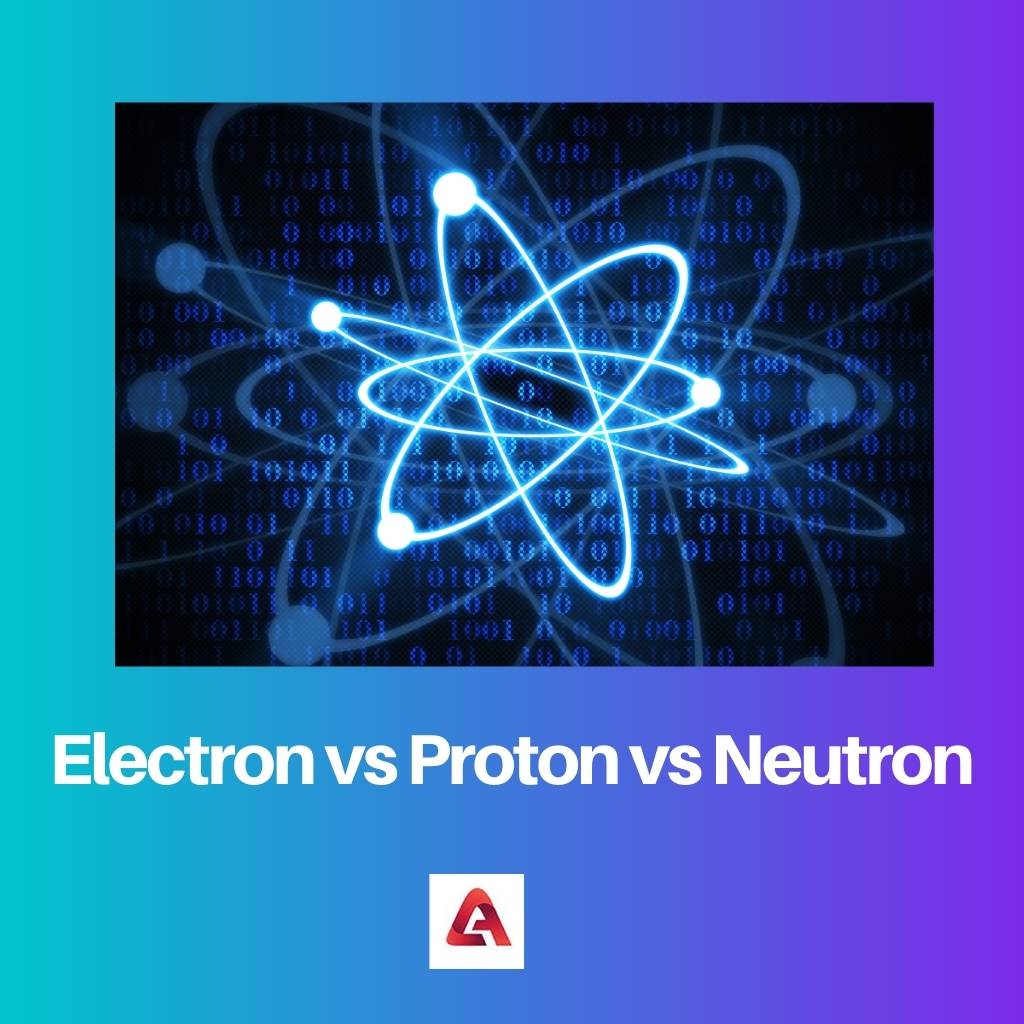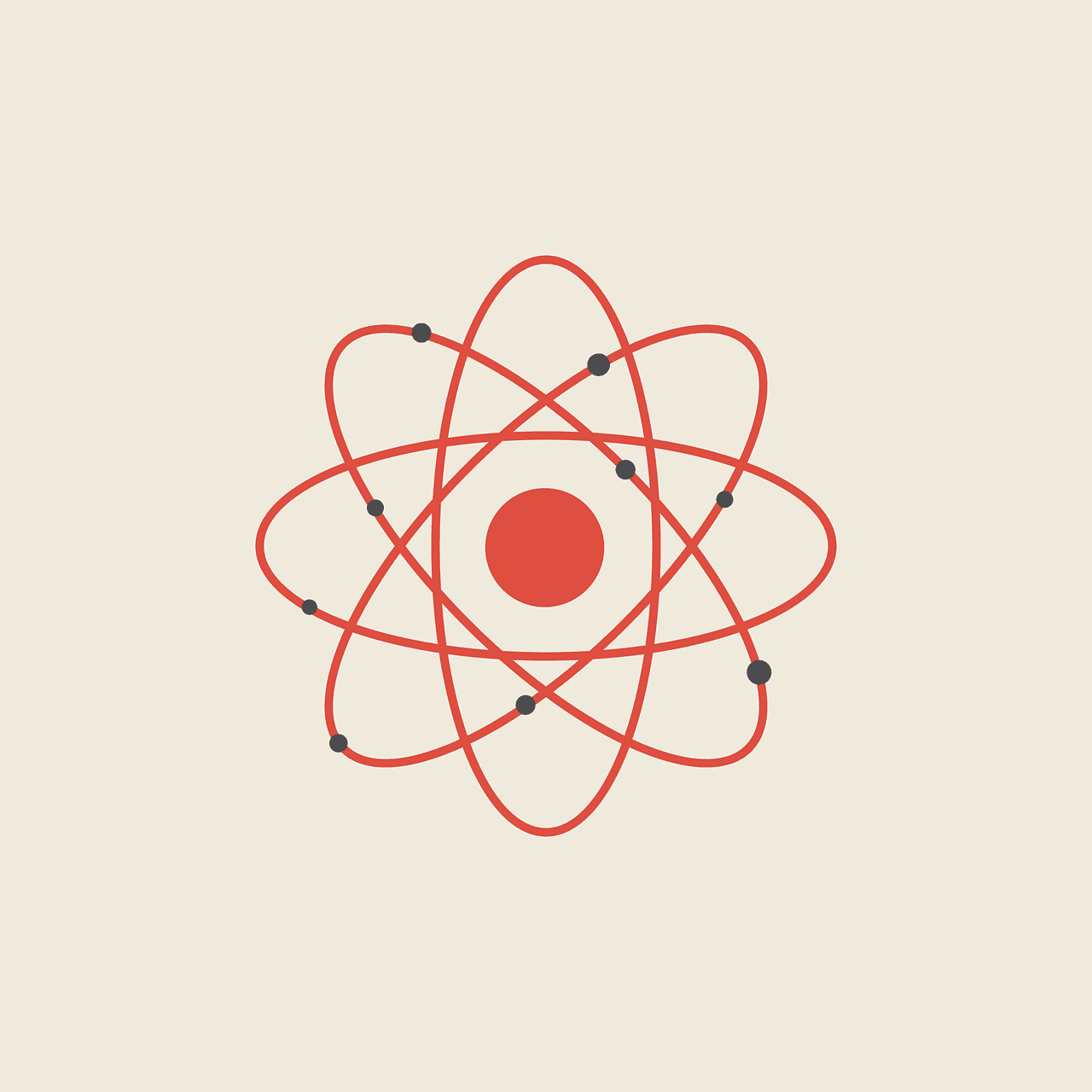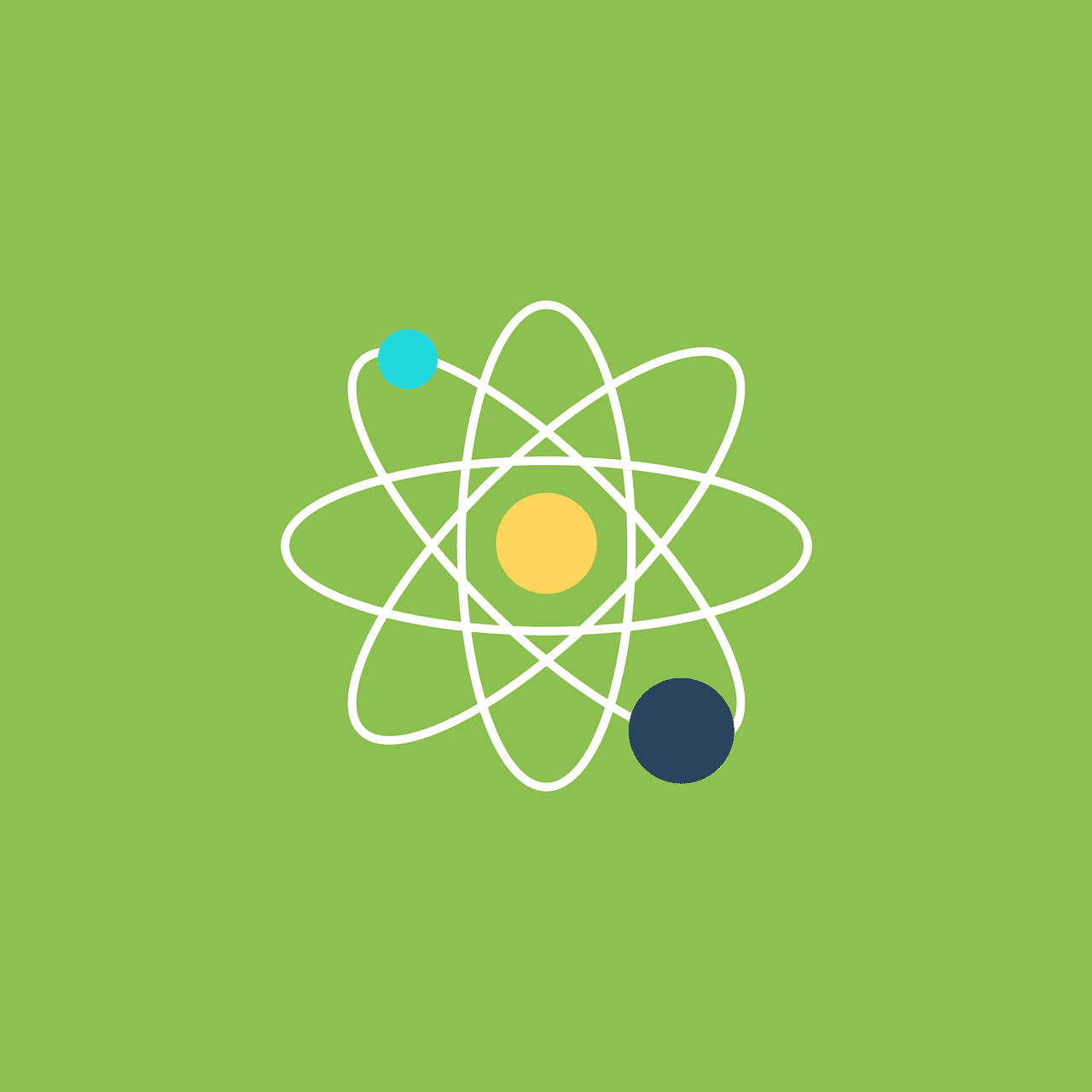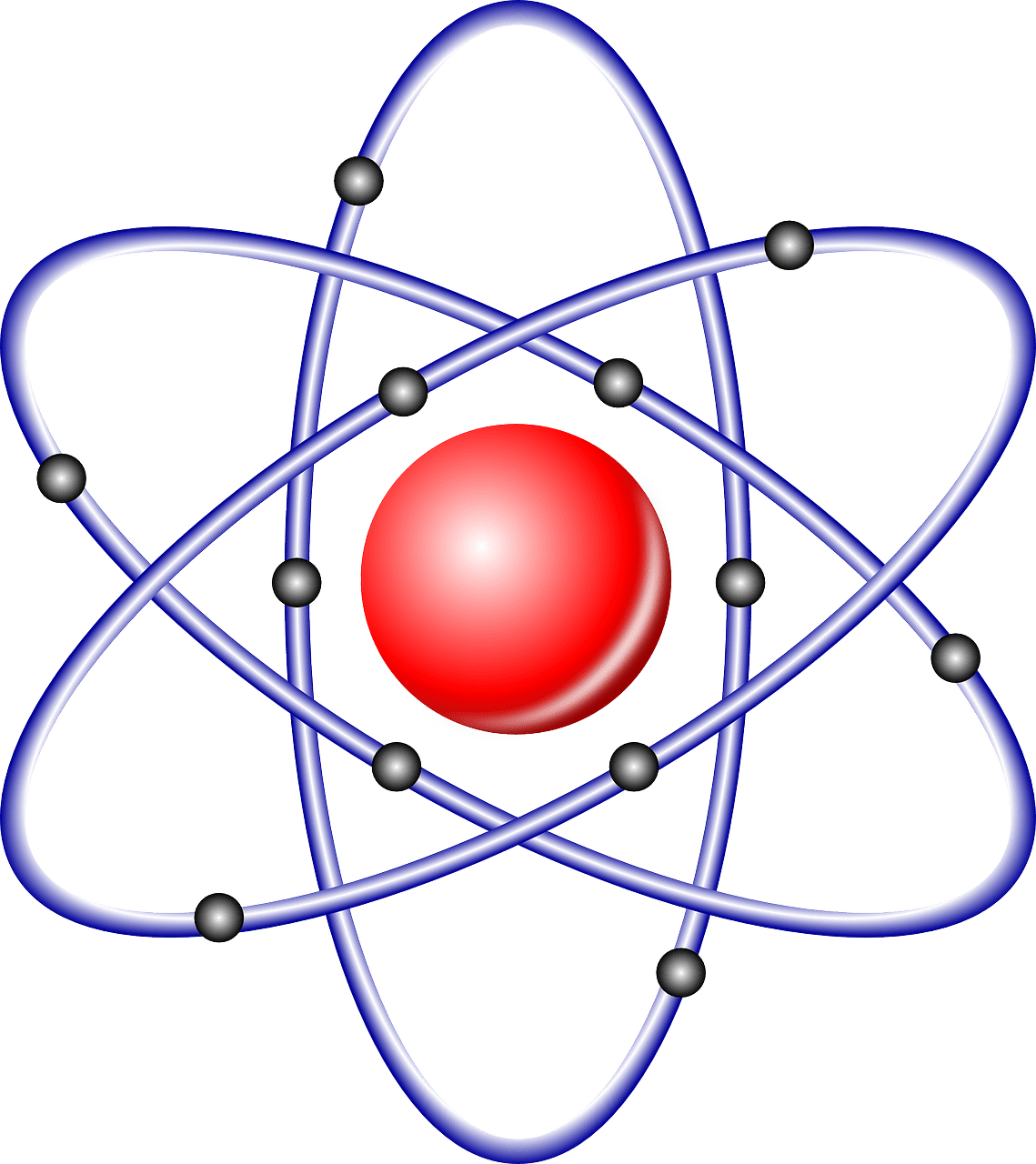Atoms make up all matter, including mineral crystals. While electrons, protons, and neutrons make up all atoms.
The Atomic Theory of Dalton clarified a great deal about matter, chemical reactions, and chemistry. Nonetheless, it was not true because atoms can be broken down into smaller subatomic particles and subunits, contrary to Dalton’s belief.
Key Takeaways
- Electrons are negatively charged subatomic particles found in the electron cloud around the nucleus of an atom, whereas protons are positively charged particles found in the nucleus.
- Neutrons are uncharged particles also found in the nucleus of an atom, along with protons.
- Protons and neutrons have a similar mass, while electrons have a much smaller mass than either protons or neutrons.
Electron vs Proton vs Neutron
The difference between electrons, protons, and neutron is the charge they carry. Electrons are charged negatively, protons are charged negatively, and neutrons do not carry any charge. Rather they are neutral. Protons, electrons, and neutrons are the subatomic particles that comprise atoms.

The electron has a negative charge. The symbol for electrons is (e–). An electron’s atomic mass unit is (5.45×10–4). The orbits of electrons are located outside the nucleus of the atoms.
When the comparison is made, the weight of the electron has no bearing. Electrons have a role in nuclear processes as well as chemical reactions.
A proton has a positive charge. (p+) is the symbol for protons. The proton’s atomic mass unit is 1. Protons are found within the nucleus of atoms. A proton has a mass of (1.672×10–27 kg). Protons are only engaged in processes that take place inside the nucleus.
A neutron is either neutrally charged or uncharged. The symbol for neutrons is (n⁰). The neutron’s atomic mass unit is one. Neutrons are also found inside the nucleus, except hydrogen. Neutrons have a somewhat higher mass than protons. Neutrons are only involved in nuclear reactions.
Comparison Table
| Parameters of Comparison | Electron | Proton | Neutron |
|---|---|---|---|
| Charge | Negative | Positive | Neutral |
| Symbolised as | e– | p+ | n⁰ |
| Atomic mass | 5.45×10^–4 | 1 | 1 |
Location | Outside the boundary of the nucleus. | Inside the nucleus of the atoms. | Inside the nucleus, exception- hydrogen. |
| Weight | Not significant. | 1.672×10^–27 kg | More than protons. |
| Reactions involved | Both nuclear reactions and chemical reactions. | Nuclear reactions | Nuclear reactions |
What is Electron?
Electrons are made up of simpler and smaller particles. They’re called leptons, and they’re a kind of particle that is fundamental. The charge of electrons is 1, which is equivalent to that of a proton but negative in characteristic.
Electrons are very minuscule particles. The electron is so light, and its weight is so insignificant that it is about 0.5×10^–3 weight of a neutron and proton.
They are considered negligible when the overall mass is calculated. Atoms constitute an equal number of their positive charge and neutrally charged particles, which contribute to the overall weight.
Negatively charged electrons are found in the universe. (e–) represents electrons. An electron has a mass of (5.45×10–4) atomic mass unit. In orbits, electrons are found outside the nucleus of atoms.
When making a comparison, the weight of an electron has no bearing. In both nuclear and chemical reactions, electrons play a role.

What is Proton?
Proton, along with neutrons, is located inside the nucleus and hence are called nucleons. They both together contribute to the mass of the atom.
The nucleus of an atom contains protons. (1.672×10–27 kg) is the mass of a proton. Only the processes that take place within the nucleus involve protons.
It is one of the three primary particles which make up an atom. Protons are present in the atom’s nucleus. This is a small, dense region in the atom’s core. Protons possess one charge that is positive and also possess a mass of one atomic mass unit (AMU).
They account for nearly all of an atom’s mass when combined with neutrons. The positive charge signifies a proton. (p+) stands for protons. 1 is the proton’s atomic mass unit.

What is Neutron?
All atoms, except most hydrogen atoms, have neutrons in their nucleus. Neutrons have no charge and are electrically neutral, unlike protons and electrons, which are electrically charged.
The neutrons in the diagram above are called n0 for this reason. “Zero charges” is represented by zero. The letter (n⁰) stands for neutrons.
One is the neutron’s atomic mass unit. The nucleus also contains neutrons, except hydrogen. Neutrons have a little advantage over protons in terms of mass. Only nuclear processes involve neutrons. The charge of a neutron is either neutral or zero.

Main Differences Between Electron, Proton and Neutron
- The electron is charged negatively. However, a Proton is charged positively. On the other hand, a neutron is charged neutral or has no charge.
- Electrons are symbolized as (e–). However, Protons are symbolized as (p+). On the other hand, Neutrons are symbolized as (n⁰).
- The atomic mass unit of an electron is (5.45×10^–4). However, the atomic mass unit of the proton is 1. On the other hand, the atomic mass unit of the neutron is one.
- Electrons are located outside the boundary of the nucleus of the atoms in orbits. However, protons are situated inside the nucleus of the atoms. On the other hand, neutrons are situated inside the nucleus as well, hydrogen being an exception.
- The electron’s weight is not significant when the comparison is made. However, the weight of a proton is (1.672×10^–27 kg). On the other hand, the weight of the neutrons is a bit higher than protons.
- Electrons are involved in both nuclear reactions and chemical reactions, both. However, protons are involved in the reactions occurring inside the nucleus only. On the other hand, neutrons take part in nuclear reactions only.
- https://www.nature.com/articles/184892a0
- https://ieeexplore.ieee.org/abstract/document/9050475/
- https://journals.aps.org/pr/abstract/10.1103/PhysRev.129.2566

The comprehensive explanation of the distinction between electrons, protons, and neutrons in this article is truly enlightening. This knowledge is fundamental for anyone interested in the field of science.
The lucid illustration of these subatomic particles greatly aids in understanding their roles within atoms and matter.
I couldn’t agree more. This article is a valuable resource for those delving into the realm of atomic structure.
This article offers a comprehensive and informative analysis of electrons, protons, and neutrons. The depth of understanding it provides is truly invaluable for individuals interested in the field of science.
The detailed comparison table presented in this article has significantly enhanced my understanding of the disparities between electrons, protons, and neutrons. The content provided is enlightening and educative.
I share the same sentiment. This article offers a wealth of knowledge and clear explanations about these essential subatomic particles.
The clear explanation of the distinctions between electrons, protons, and neutrons is greatly appreciated. Understanding these particles is essential in comprehending the composition of atoms and matter.
This article effectively conveys the intricate details of electrons, protons, and neutrons.
I absolutely agree. Having a comprehensive knowledge of subatomic particles is fundamental in various scientific disciplines.
The distinction between electrons, protons, and neutrons is central to the understanding of atomic structure and the behavior of matter.
The incredible intricacy of atomic particles and their interactions continues to captivate scientists and researchers.
Atoms are the building blocks of reality, and the study of their components is essential for our comprehension of the natural world.
The meticulous breakdown of electrons, protons, and neutrons in this article is truly remarkable. This comprehensive understanding is vital in various scientific disciplines.
This article serves as a valuable resource for anyone aiming to grasp the complex nature of atomic structure.
Absolutely. The insights shared in this article are crucial for fostering a deep understanding of atomic particles.
The characteristics of electrons, protons, and neutrons inform the properties and behavior of matter at its most fundamental level.
The symphony of forces operating within atoms is beautifully orchestrated by the interactions of electrons, protons, and neutrons.
The exploration of atomic structure and subatomic particles has reshaped our understanding of the physical universe.
The attributes and behaviors of electrons, protons, and neutrons are at the core of chemistry and physics, driving the principles of matter and energy.
The subatomic realm holds the key to the profound mysteries of the universe, and our study of it continues to yield remarkable insights.
Electrons, protons, and neutrons have distinct roles and characteristics within the structure of atoms, influencing their chemical and physical properties.
The interplay of subatomic particles within atoms leads to the diverse array of elements and compounds that form the basis of our world.
The charges and masses of electrons, protons, and neutrons give rise to the complexity and richness of matter in the universe.
The difference between electrons, protons, and neutrons lies in their charges. While electrons are negatively charged, protons are positively charged, and neutrons are neutral.
The charges of electrons, protons, and neutrons have important implications in the behavior of atoms and their interactions with each other.
Thank you for enlightening us with the fundamental differences between electrons, protons, and neutrons. This information is crucial in understanding the basic building blocks of matter.
I couldn’t agree more. This article provided a concise breakdown of these subatomic particles.
This information will be invaluable for students and anyone interested in the field of chemistry.
The revelations about the subatomic particles that form atoms have revolutionized our scientific knowledge and technological capabilities.
The subatomic tapestry woven by electrons, protons, and neutrons reveals the intricate fabric of the natural world and its forces of creation.
This article has provided a thorough and illuminating overview of electrons, protons, and neutrons. The breakdown of their differences has enhanced my understanding of atomic structure.
The insights shared in this article are indispensable for anyone seeking a deeper understanding of atomic theory.
I found the comparison table particularly helpful in highlighting the disparities between these subatomic particles.
The thorough breakdown of electrons, protons, and neutrons in this article is invaluable in deepening our understanding of atomic particles. The clarity and depth of information are exceptional.
The articulation of the differences between these subatomic particles is truly enlightening and immensely beneficial.
Absolutely. This article has successfully elucidated the complex nature of subatomic particles.
The Atomic Theory of Dalton was a significant advancement in understanding matter and chemical reactions, but modern science has revealed even more detailed information about the components of atoms.
The discoveries about the components of atoms and their behaviors have opened up new frontiers in chemistry and the physical sciences.
Atoms are truly fascinating structures, and unraveling their mysteries has been a remarkable journey for scientists over the centuries.
The lucid elucidation of electrons, protons, and neutrons in this article is invaluable for anyone seeking to gain a comprehensive understanding of atomic structure. This resource offers a wealth of knowledge.
The detailed comparison of these subatomic particles is truly enlightening and aids in understanding the intricate composition of matter.
I couldn’t agree more. The wealth of information in this article is essential for those delving into the realm of atomic theory.
The charges and masses of electrons, protons, and neutrons are key factors in understanding the properties and behaviors of atoms.
The symmetrical arrangement of positively and negatively charged particles within the atom is essential for its stability and reactivity.
The fundamental particles of atoms—electrons, protons, and neutrons—underpin our understanding of the physical world and its myriad phenomena.
The structure and dynamics of atoms provide a window into the underlying mechanisms that shape the universe as we perceive it.
The clarity with which this article presents the distinctions between electrons, protons, and neutrons is commendable. This detailed information enhances our comprehension of the foundations of matter and atoms.
I couldn’t have said it better. The insights shared in this article are truly enlightening.
This article serves as a valuable resource for those seeking precise knowledge about subatomic particles.
The subatomic particles that make up atoms are the electrons, protons, and neutrons. These particles have different charges and are found in different locations within the atom.
Electrons, protons, and neutrons are some of the most basic components of atoms. Their properties and characteristics are fundamental to our understanding of the physical world.
Dalton’s Atomic Theory was groundbreaking at the time, but further research has shown that atoms can indeed be broken down into smaller subatomic particles.